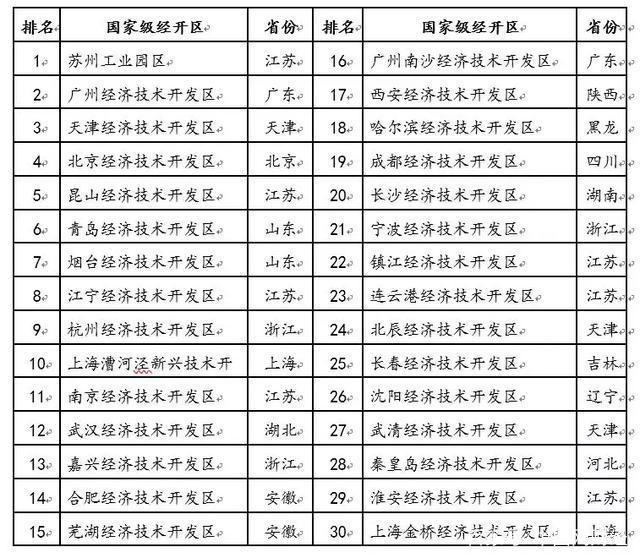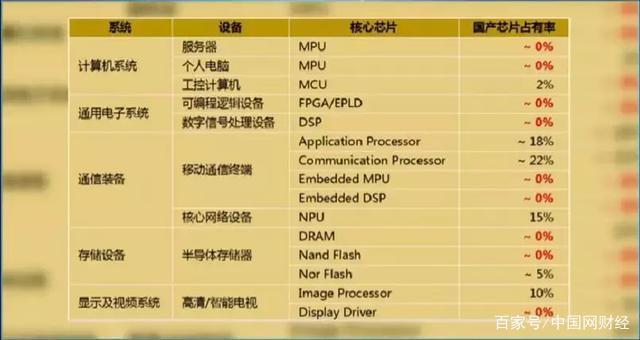On May 8, Premier Li Keqiang presided over the State Council executive meeting to deploy and promote the innovation and upgrading of the national economic and technological development zones and create a new highland for reform and opening up. Decided to extend the preferential policies for corporate income tax on integrated circuits and software, attracting domestic and foreign investment to participate more and promote the development of the information industry. Relevant departments should pay close attention to research and improve the support policies for promoting the development of the integrated circuit and software industry to a higher level.

Integrated circuits and software can be said to be the cornerstone of the current digital economy and information society. There are indeed many "card neck" shortcomings in these two fields, such as CPU, lithography machine, operating system and so on. A number of industry analysts told Zhongzheng Jun that the short-board must be adhered to for a long time. The decision of the State Council's executive committee reflects the continuity of policy. At the same time, it treats all kinds of capital of different ownerships equally, and also reflects policy fairness.
Signal 1: Give the Economic Development Zone greater reform autonomy, and the science and technology innovation policy will be tested first.
According to the website of the Ministry of Commerce, as of the end of 2017, there were 18,000 high-tech enterprises in 219 national-level economic development zones, accounting for 13.8% of the country; more than 400 national-level incubators and mass-creating space; The amount is 57 pieces. At the same time, in 2017, the regional GDP of 219 national economic development zones was 8.9 trillion yuan, up 9% year-on-year, accounting for 11% of GDP; the total import and export volume and import and export volume of high-tech products increased by 12.9%. % and 10.1%.
The importance of the national economic development zone is self-evident. The National Assembly will put forward four requirements for the development of the Economic Development Zone:
First, we must support the Economic Development Zone to optimize the business environment and promote the advancement of the “distribution service” reform. Simplify the approval of investment projects, implement the approval of tolerance, and inform the commitment system. Incorporate investment results into the assessment and incentives of the Economic Development Zone. Encourage entrepreneurial innovators in terms of household registration, children's enrollment, and venture capital investment. All localities must take the initiative to give the Economic Development Zone greater autonomy in reform, release vitality, and manage fairness.
Second, we must promote innovation and development. The Economic Development Zone should take the lead in putting the national science and technology innovation policy in place, and the results can be significantly improved. Support the construction of national large scientific experimental devices and national science and technology innovation bases. The income of the inventions transformed by the research institutes in the district shall be given to the scientific and technological personnel participating in the research and development, and the cash rewards for scientific and technical personnel participating in the research and development shall be reduced to 50% of the wages and salaries, and the personal income tax shall be paid. Increased support for the construction of talent training bases in the economic development zones and vocational colleges.
Third, we must improve the level of openness. Support the introduction of private capital and foreign capital development and operation of characteristic industrial parks in the Economic Development Zone, and encourage Hong Kong and Macao regions and foreign institutions, enterprises and capital to participate in the operation of international cooperation parks. Support the establishment of a comprehensive bonded zone. Support pilot projects such as capital project revenue and expenditure facilitation in conditional economic development zones.
Fourth, we must promote industrial upgrading. National major industrial projects are prioritized in the region. Implement advanced manufacturing cluster cultivation actions and modern service industry optimization and upgrading actions. Promote the level of "double innovation". Encourage all types of capital investment to develop the digital economy.
Top 30 national comprehensive economic development zones

Source: Ministry of Commerce website
Signal 2: Treat all types of ownership, including foreign investment, and extend the preferential income tax policy for integrated circuits and software
The meeting pointed out that it is conducive to promoting the optimization and upgrading of the economic structure by treating all types of enterprises in China, including foreign-funded enterprises, in the same way, implementing inclusive tax cuts and reducing fees, attracting various investments to participate in and promoting the development of integrated circuits and software industries. Better meet the needs of high quality development and high quality of life. The meeting decided to implement the corporate income tax “two exemptions and three halvings” for the integrated circuit manufacturing enterprises or projects according to the different conditions (ie, the first year to the second year exemption, the third year to the fifth year halved On the basis of “five exemptions and five reductions” (ie, exemption from the first year to the fifth year, and halving from the sixth to the tenth year), continue to implement the 2011 State Council on integrated circuit design and software companies. Issued the “Notice of Two Freedoms and Three Reductions” in the Notice of Further Encouraging the Development of Certain Policies for the Software Industry and the Integrated Circuit Industry.
Signal 3: Grasp the research and improve the support policy for the next step to promote industrial development
The integrated circuit and software industry is a strategic, basic and leading industry that supports economic and social development. Its development also requires high investment and long-term persistence.
A brokerage IC industry analyst told Zhongzheng Jun that the existing policies in the industry have been relatively adequate in terms of capital, talents, taxation, etc. The current regular meeting expressed a firm attitude to support the development of the integrated circuit and software industry. Conducive to the implementation of existing ideas.
Xie Shaofeng, director of the Information and Software Services Department of the Ministry of Industry and Information Technology, recently revealed that it is expected to introduce an action plan to support the development of China's software industry in the first half of this year. Xie Shaofeng introduced that in 2018, China's software industry realized revenue of 6.3 trillion yuan, a year-on-year increase of 14.2%, and the number of enterprises above designated size was 37,800. At the same time, he also said that China's software industry still has problems such as insufficient state investment, disconnected production and production, weak ecology, and shortage of talents.
What level is China's IC industry in the end? Wei Shaojun, director of the Institute of Microelectronics at Tsinghua University, said in a public speech recently that "it is neither as good as everyone imagined nor as bad as everyone imagines. Of course, we can't meet the demand now, but as long as we persist, we can definitely go. Go to the level we want."
Wei Shaojun said that China's IC market accounts for 34% of the world, but the products account for only 7.9% of the world, that is, 26% depends on imports.

Image from Wei Shaojun speech
According to the data disclosed by the General Administration of Customs in early 2019, China imported 417.57 billion integrated circuits for the whole year of 2018, with a total amount of 205.84 billion yuan (about 310 billion US dollars), accounting for 14.6% of China's total imports, exceeding the 2017 figure of 260.1 billion US dollars. For the first time, it broke through 300 billion US dollars and hit a record high!
Wei Shaojun pointed out that in the enthusiasm of the country to develop integrated circuits, there are problems such as blind investment layout and shortage of professional talents. At the same time, global market adjustment, unreasonable industrial layout, and complex international environment are also serious challenges facing China's integrated circuit industry. China Electronics and Information Industry Development Research Institute predicts that the global semiconductor market growth rate will drop sharply from 21.5% in 2018 to 2.6% in 2019. Under the influence of the complex international trade environment and the slowdown of the global market, domestic semiconductors in 2019 Industry growth will also gradually slow down. How to deal with these challenges against the trend is also a factor to be considered in future industrial planning.
The semiconductor sector has already walked
Dongcai choice data shows that the semiconductor index (802046) once rose 5.25% in intraday trading, leading other sectors, and finally closed up 2.34%. Among the 37 semiconductor concept stocks, 31 closed up. Among them, Dagang shares and Kangqiang Electronics reached a daily limit, and the North China Huachuang daily limit was opened, and finally closed up 7.07%.

According to the incomplete statistics of Zhongzheng Jun, there are 7 A-share companies from national economic and technological development zones and whose industries belong to integrated circuits or software development.

keyword...
Sure